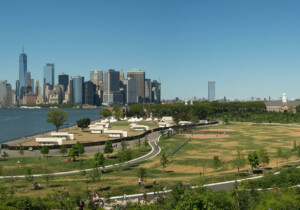On Wednesday night, the Dallas City Council unanimously approved the city’s Comprehensive Environmental and Climate Action Plan (CECAP), a roadmap to making the city carbon neutral by 2050 and safeguarding against the effects of climate change.
The first version of CECAP was released on April 22, 2020, to coincide with the 50th Earth Day. The final, full plan (available here) touches on eight different targets ranging from reducing waste, to mandating that all new construction reach net-zero emissions in the next 10 years, to improving food security.
“We just unanimously approved the @CityOfDallas’s first ever Comprehensive Environmental & Climate Action Plan,” wrote Dallas Mayor Eric Johnson on Twitter after the plan’s passage. “This plan will ensure we are taking necessary steps to overcome our environmental challenges and to make Dallas a global leader in addressing environmental issues.”
CECAP has 97 different action items intended to help break each section into achievable goals; the building sector has 16 steps, for instance, while there are 11 for energy, 19 for transportation, and 15 for water resources. Some of the most sweeping changes include:
- Ensuring all new construction by 2030 is carbon neutral (buildings and energy usage account for 64 percent of the city’s greenhouse gas emissions)
- Slashing emissions from existing residential stock by 10 percent by 2030 and by 25 percent in 2050
- Establishing a benchmarking system for tracking building energy usage and emissions, and exploring the possibility of implementing net-zero energy usage for new construction by 2030
- Beefing up the reliability of the city’s energy grid and transitioning toward powering it through renewables
- Converting the city’s bus and taxi fleet to be powered entirely by renewables by 2040 and improving public transportation options
- Increasing tree cover to ultimately reduce the city’s heat island index by 75 percent and ensuring 95 perfect of the population lives within one mile of a park by 2050
- Ensuring 100 percent of the city has access to healthy and affordable food by 2050
Although the CECAP will touch every aspect of life in Dallas in the next 30 years, some reportedly argued that the plan doesn’t go far enough (many of the goals are modeled after the Paris Climate Agreement). Still, in passing the measure, Dallas now joins Houston, Austin, and San Antonio (among others) as Texan cities who are planning for the future at a time when the state’s government is focused more on hard infrastructure measures rather than greenhouse gas mitigation.











